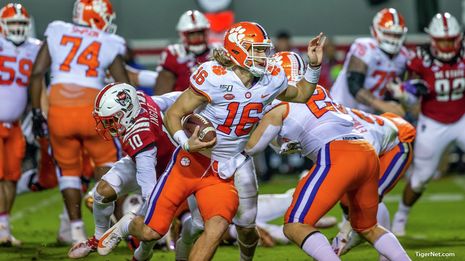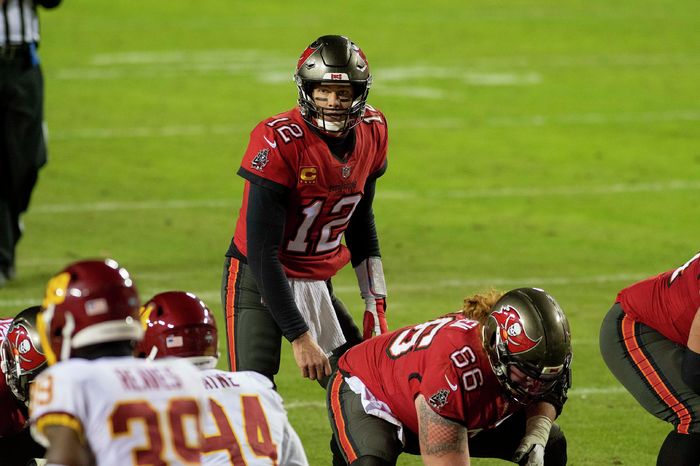Varsity Explains: The NFL Draft
In the build-up to this year’s NFL Draft, Jack Wadding breaks down the basics and analyses the intricacies of the uniquely American system

On Thursday 29th April, the NFL will engage in its annual selection ritual, The Draft. As the name suggests, it is, put simply, a system of recruiting new players into the 32 teams of the league. With a little understanding, the beauty and ideology behind The Draft becomes a sight to behold. So, with the 2021 edition around the corner, now is your chance to get to grips with the uniquely American concept.
Here are the basics. There are 32 teams in the NFL. Each is ranked according to its performance in the previous season. The team with the worst record is given the first pick and the team with the best record (the Super Bowl Champions) are given pick number 32. There are seven rounds of drafting over the course of three days. The players are selected from college teams, which form their own, highly popular sport in itself (College Football).
For newcomers to the NFL, this system might seem a little odd and you might have a few questions. Why do professional teams select from college squads? Why not create a more direct youth academy like in Europe? The answer lies in the history of the game on the American continent. In the late 19th century, while British football was developing from an amateur to a professional sport, American football was taking hold of the college scene. It was only in 1920, long after the college game had gained popularity, that the ‘American Professional Football Association’ was founded. Fifteen years later, a bidding war over college star, Stan Kostka, encouraged the league to find a fairer way of distributing college talent. Thus, the first NFL Draft took place the next year, in 1936.
“...the Americans are very proud of the ‘parity’ that exists between their teams, which derives directly from The Draft.”
Given the current climate of European football, this system seems somewhat utopian. Nearly a full century ago, the Americans foresaw the dangers of a laissez-faire system where the richest clubs can dominate the recruitment of high-quality players. However, in defence of British and European sport, such a concept could never have been feasible on account of the vast number of clubs. As we have seen over the last week or two, the meritocratic pyramid of club football and its tenet of continuous promotion and relegation is, at least by now, an intrinsic and enshrined part of the game. The success of the NFL Draft rests on the closed structure of the league, of which all 32 franchises are always a part.
So, it’s really a trade-off. Either you have a meritocratic system of hundreds of teams and a select few who dominate, or you have a closed system of a smaller number of teams who all have an equal shot at success. And the Americans are very proud of the ‘parity’ that exists between their teams, which derives directly from The Draft.
The success of such a system can be very easily exemplified, too. Even within the last few years, quarterback Patrick Mahomes, who was drafted 10th overall in 2017, has had a profound impact on the fortunes of the Kansas City Chiefs. The Chiefs’ previous QB, Alex Smith, was averaging just over 20 touchdowns per season between 2013 and 2017. In just his second year in the league, Mahomes threw 50 touchdown passes and has continued to sustain an annual average of 38. Having not attended a Super Bowl since 1969, the Chiefs have now been led to two consecutive Super Bowls, winning one (2020) and losing the other to win-machine Tom Brady (2021). All of a sudden, the Chiefs are a force to contend with.
So valuable are draft picks, in fact, that they are used as bargaining chips. Where, in European football, players are transferred for monetary compensation, NFL players are ‘traded’ either in return for another player or a selection of draft picks, or a mixture of the two. Just last month, the San Francisco 49ers traded away their first-round picks from this year, next year and the year after that in order to acquire the third overall pick in this year’s draft. Evidence would suggest that they are targeting a ‘franchise’ player who, like Mahomes, will contribute towards years of future success.
However, drafting can also be a gamble, particularly when you’ve sacrificed so much for an early pick. NFL teams do the best they can to evaluate the vast number of players eligible for The Draft each year, through scouting college games, watching tape and attending The Combine, a week-long showcase of physical and technical talent which takes place every February. Despite this, throughout the history of The Draft, there have been a number of infamous ‘busts’, who have disappointed the teams that pinned all their hopes on them. For example, in 2007, JaMarcus Russell was picked first overall by the Oakland Raiders. Over the next three seasons, he threw more interceptions (23) than touchdown passes (18) and was subsequently released.
But there are two sides to that coin. Take Tom Brady, who, at the age of 43, won his seventh Super Bowl in February of this year. Brady is without question the most successful player in the history of the NFL, which might lead you to believe he was a highly touted draft talent. Untrue. In fact, he was picked 199th overall, in the sixth round of the 2000 NFL Draft. As a result, he is unsurprisingly the best example of a draft ‘steal’.
By now, I hope that you’re starting to see the magic of the draft, its egalitarian nature, its unpredictability and the resulting excitement for fans, players and teams. All that is left is to add the flesh to the skeleton. This year, there are an impressive number of quality quarterbacks but one has been consistently hyped up throughout the last year: it is essentially a fait accompli that Trevor Lawrence will be picked first by the Jacksonville Jaguars. Other QBs that are expected to go early are Zach Wilson, Justin Fields and Trey Lance. Exciting wide receivers (the fast guys who catch the ball) likely to go in the first round include Ja’Marr Chase, Jaylen Waddle and Devonta Smith. Another surprise this year is the depth of quality offensive tackles (the heavy guys who protect the QB and other offensive players), of which there should be at least four in the first round. Nearly 300 players will have a new team by Saturday 1st May, with the 2021-22 NFL season set to kick off on 9th September.
Details on how to watch the Draft can be found here.
 News / Eight Cambridge researchers awarded €17m in ERC research grants27 December 2025
News / Eight Cambridge researchers awarded €17m in ERC research grants27 December 2025 News / Clare Hall spent over £500k opposing busway 24 December 2025
News / Clare Hall spent over £500k opposing busway 24 December 2025 Comment / League tables do more harm than good26 December 2025
Comment / League tables do more harm than good26 December 2025 Comment / The ‘class’ of Cambridge24 December 2025
Comment / The ‘class’ of Cambridge24 December 2025 News / Caius mourns its tree-mendous loss23 December 2025
News / Caius mourns its tree-mendous loss23 December 2025









